Yes, Texas Does Get Cold
Moving to Texas wasn't a complete escape from cold weather
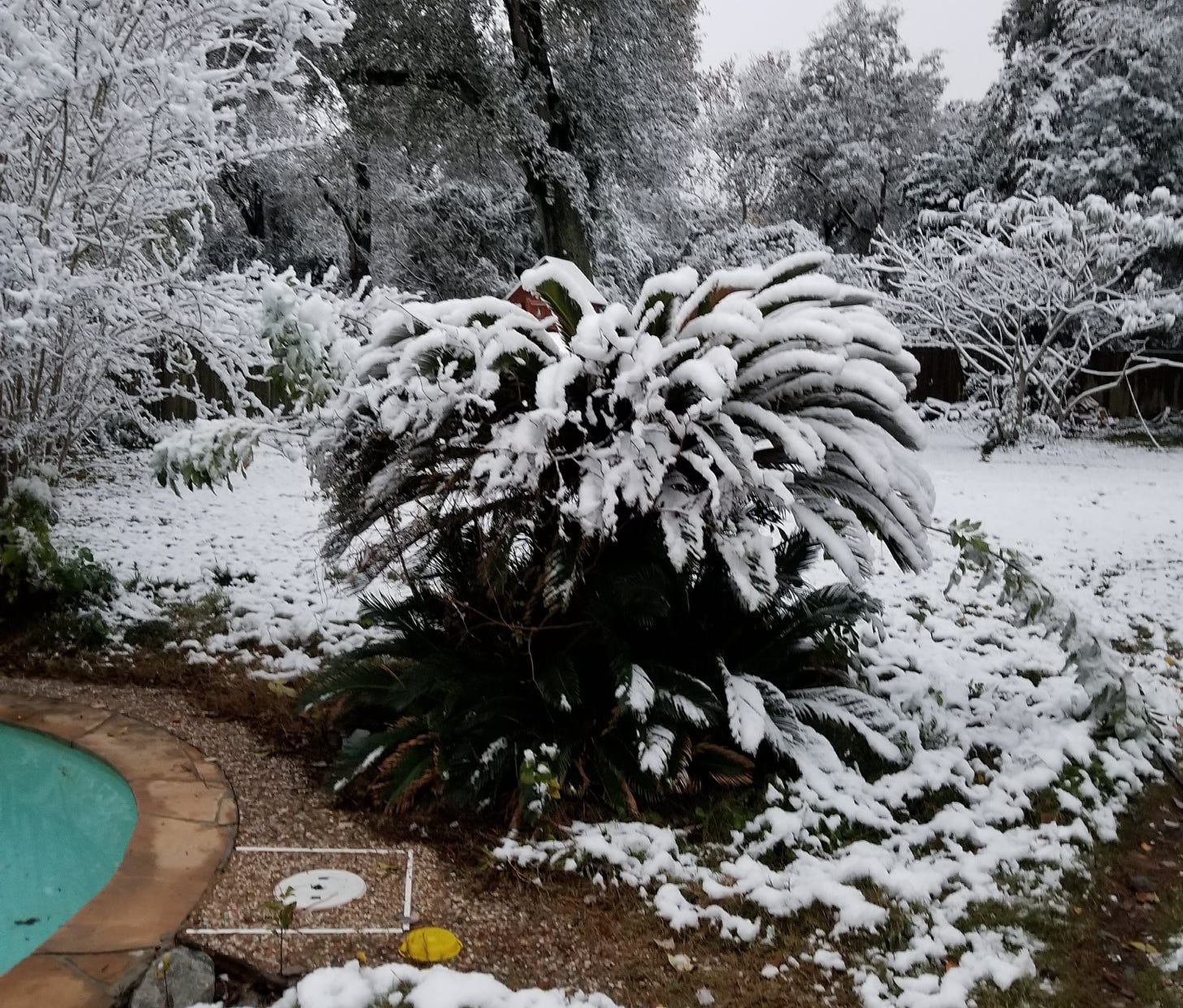
We started contemplating a move to Texas because we were tired of the cold. Two long winters with snow that never left our Fort Wayne, Indiana front yard and no break from the constant below-freezing temperatures convinced us that we were done. We had both spent our entire lives in the northern half of the United States and we were ready for something different.1
So we moved to Southeast Texas in the middle of July, during the worst of the summer months, braving the weeks in a row of 100+ degree days and humidity that hung in the air like a sopping wet quilt. We held our tongues and tried to avoid complaining about the oppressive heat, reminding ourselves that this was the bargain we made so that we could have warm winters free of ice and cold.
Except, life in the southern United States isn’t quite that simple.
My husband’s parents decided to come down to visit us during our first Thanksgiving far away from home. They were looking forward to having a warm holiday and spending time with us and their grandchildren. It would have been perfect, except we got hit by a cold snap that brought frigid rain and dropped the daytime temperature down to the 50s. Our hopes for a warm holiday were dashed, but by mid-December we were out camping in Sam Houston National Forest, playing and hiking in the warm sunshine and perfect 60-degree weather. By Christmas day, I was wearing a tank top and capris to a friend’s house for dinner.
The following year we looked forward to a Christmas break anniversary trip to New Orleans, a straight shot east on I-10. Average temperatures were supposed to be in the 60s and we had plans to walk the French Quarter, Louis Armstrong Park, and possibly explore the state park where we were enjoying a child-free weekend.
Again my in-laws visited and again the temperatures dropped. A rainy cold front brought freezing temperatures and we bundled up in hats and gloves as we walked around the city, cradling our Cafe du Monde coffee in our hands.
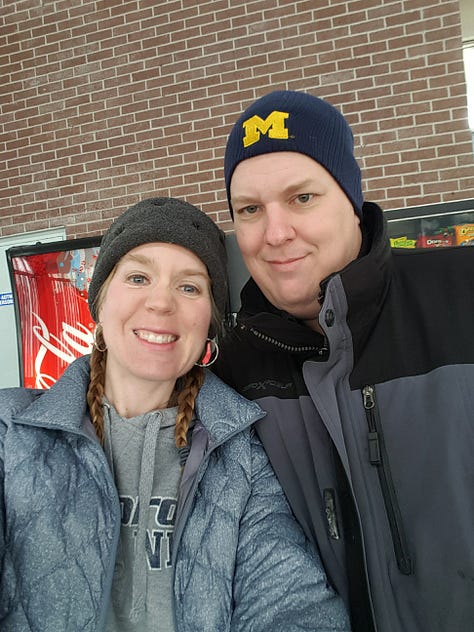
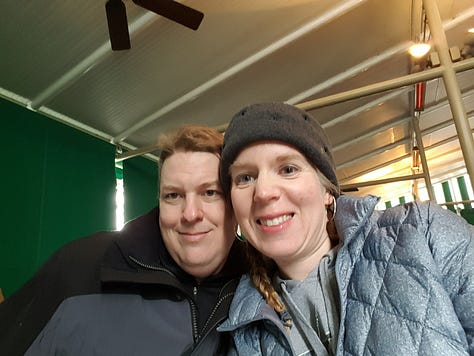
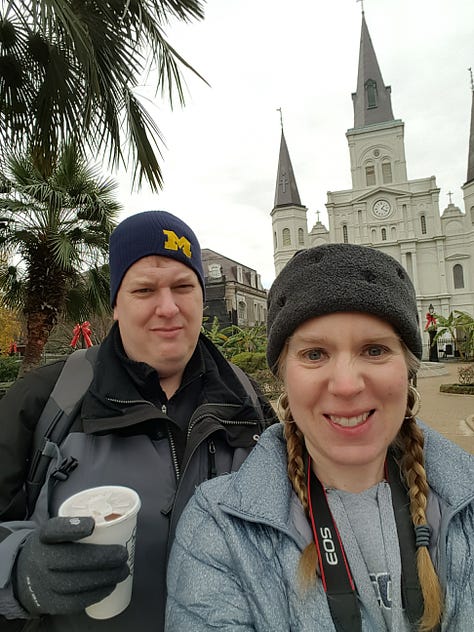
The next December, four months after Hurricane Harvey ravaged the Gulf Coast, it snowed.2 Honest to goodness white fluffy flakes covered our palm trees, lawn, and confused our two dogs, one who had never seen snow before and the other who did not remember a puppyhood born into the snowy Midwest. Our kids gleefully ran out into the heavy, wet snow, forgetting just how cold it would be to the touch. I laughed as I watched my high school students play in the snow that remained on the lawn outside of the entrances to the school. My Midwestern colleagues taught Texan teenagers how to make proper snowballs with snow that was just the right heaviness for packing. The snow was gone in less than 24 hours.
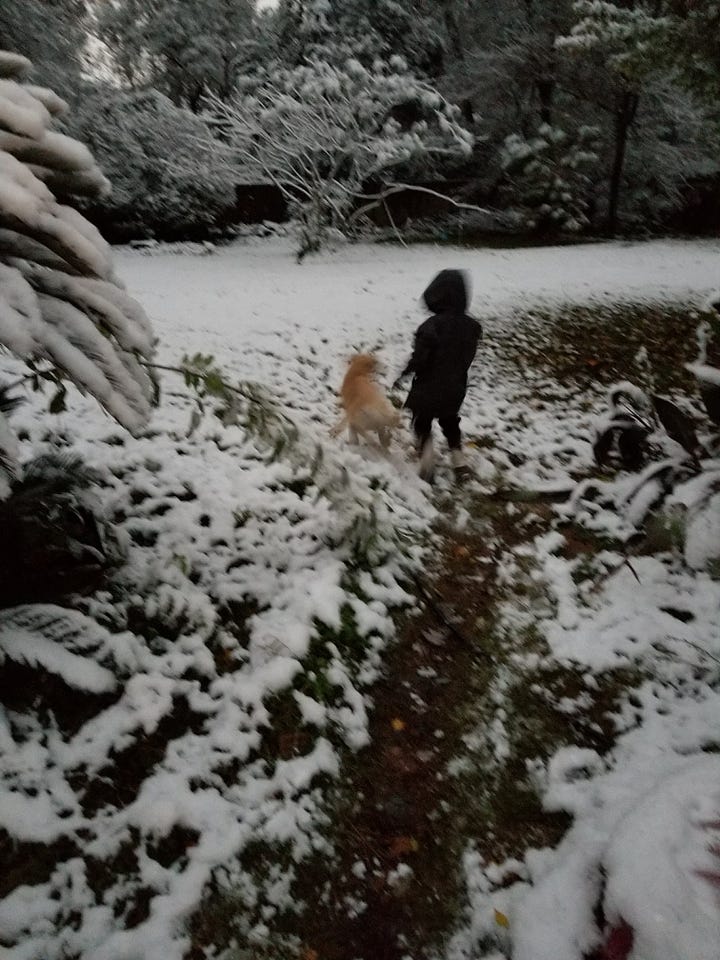

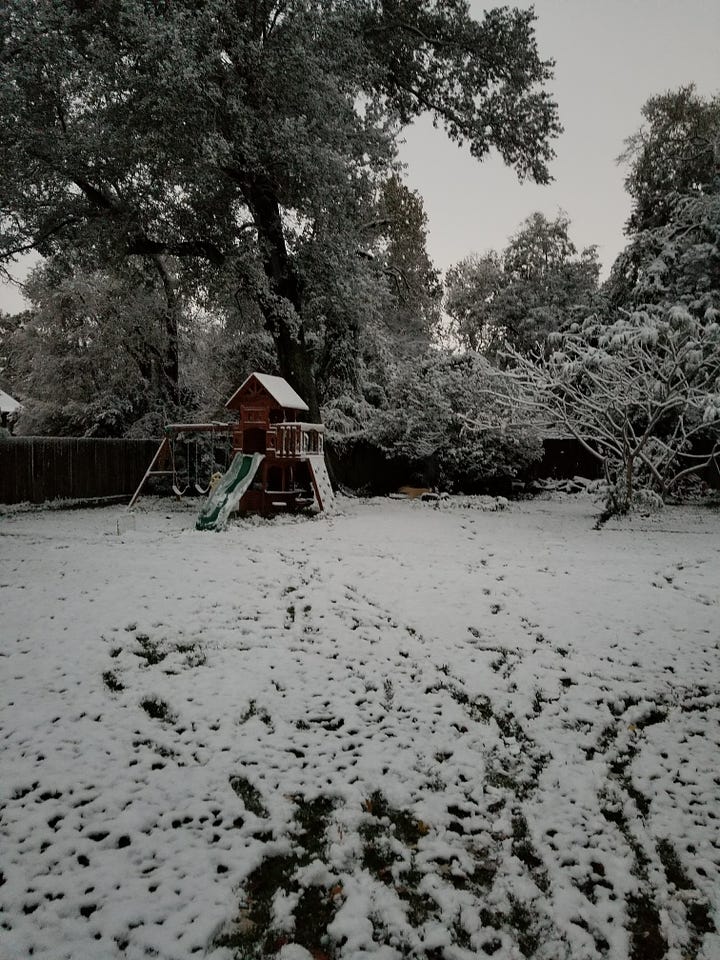
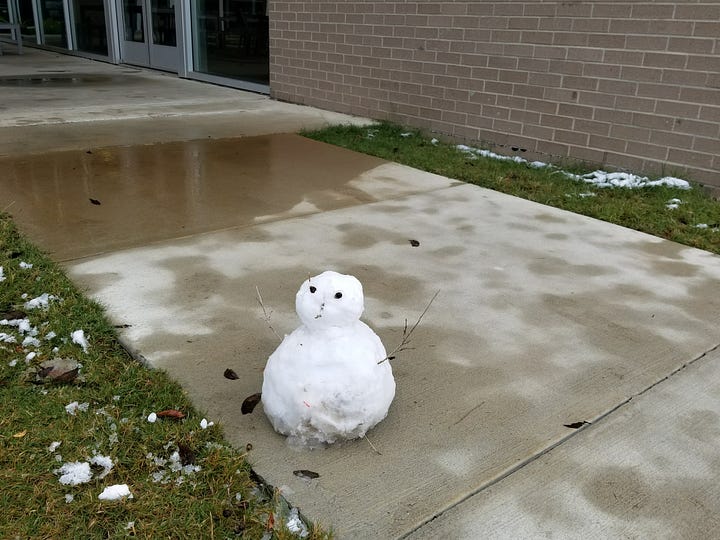
The weather didn’t get much better during the rest of that December. When my husband and I went to Austin at the end of the month to celebrate our anniversary, we were once again donning hats and gloves, making an unplanned trip to REI to buy the outerwear that we would need to comfortably walk around the city. Again, my in-laws were visiting and watching the kids, and again, the cold temperatures were short lived.3
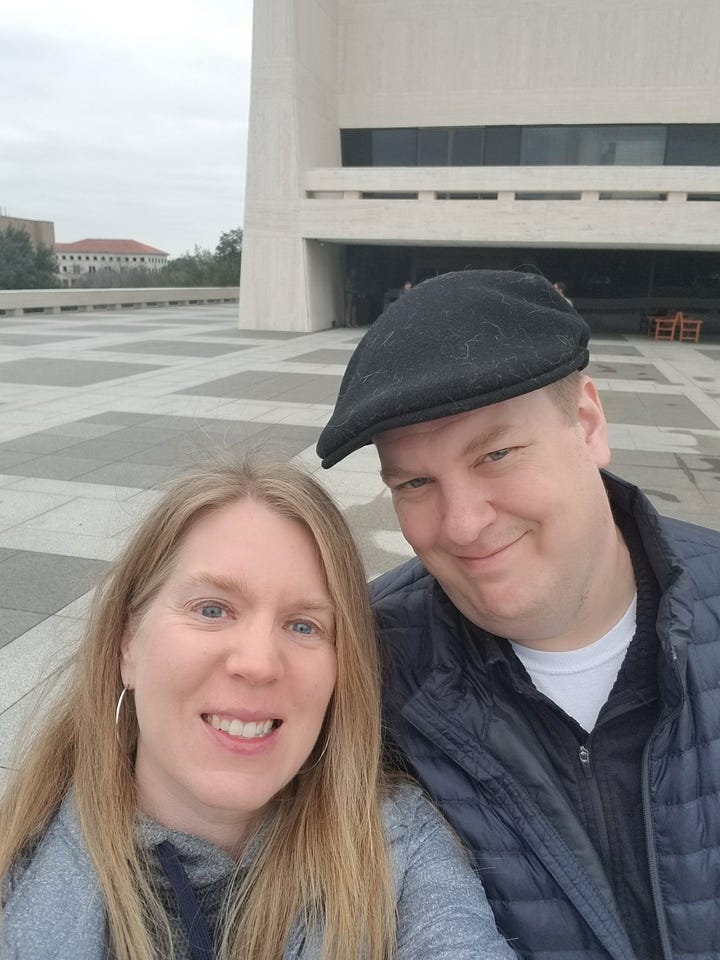
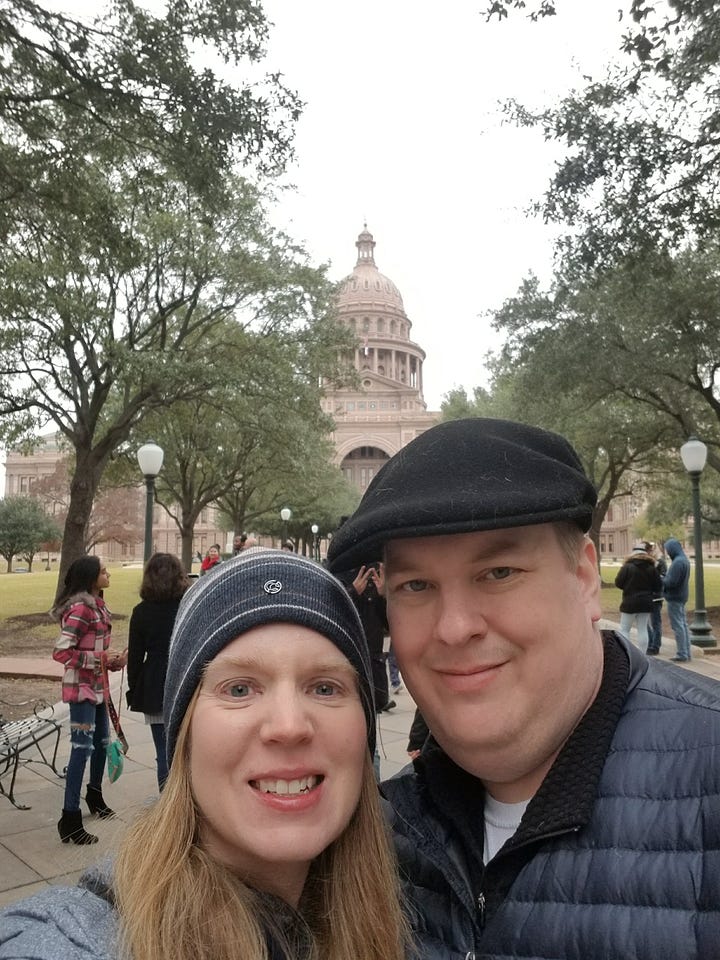
We also discovered that the vast diversity in Texas ecosystems also meant wide differences in winter temperatures. When we traveled to west Texas for our 2018 Christmas break, the Davis Mountains never got out of the 40s and we woke up to a dusting of powdery snow on our last morning there. We decided to leave our Christmas break vacation to Palo Duro Canyon a day early because there was a snowstorm in the forecast for the Texas panhandle, a storm that followed us nearly the entire way home to Houston.
But nothing beat the winter of 2020-2021. After being chased home during our end-of-December trip, we watched the February forecast turn from curious to dangerous, the temperatures dropping below freezing across the entire state, bringing snow and ice, and shutting down our electrical grid.
As two Midwesterners who had frequently survived weeks of freezing temperatures at a time, we thought we were prepared, but even we didn’t think to leave water running in our kitchen faucet or consider that our smaller furnace wouldn’t be able to keep up with the colder temperatures. We watched as friends and family up north joked about how wimpy Texans were being about the cold, but for us, it was no joke. And when the grid shut down, all bets were off. We got lucky. Our new solar panels lasted through the 17-hour shutdown our neighborhood faced. But we knew people who watched outdoor pipes burst and dry-walled ceilings collapse due to water damage. Across the state, 246 people died, and those were just lives that could be directly attributed to the cold and power failures.
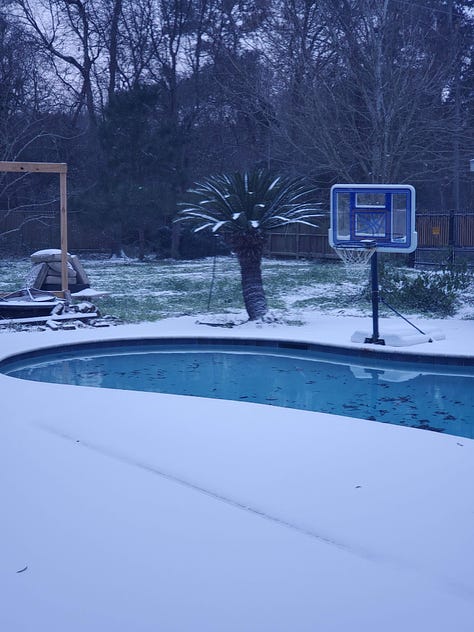
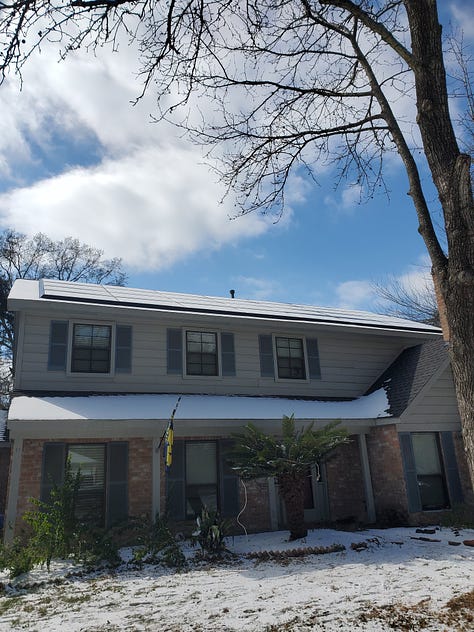
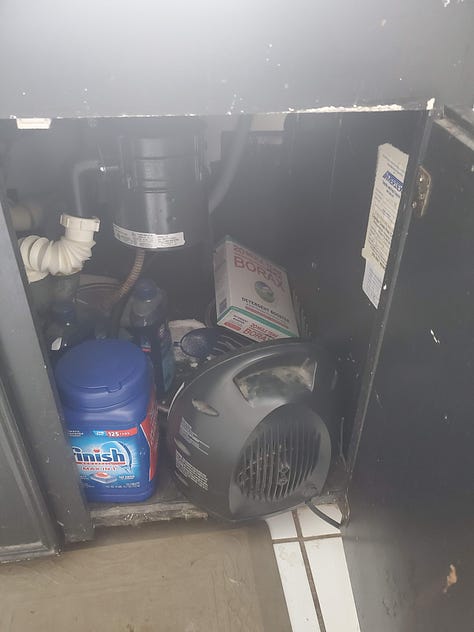
Winter average highs are between 60 and 70 degrees in Houston, which means that we did enjoy some incredible weather during the winter months. In the six years that we lived in Houston, we spent the six months between October and March camping, going to the drive-in movie theater, occasionally swimming in our pool, and I kept up running outdoors all winter long, sometimes in shorts and a tank top.
But it did get cold. We did have to occasionally break out our light winter coats and gloves and hats. We did have to turn on our furnace more than a couple of times a year and we occasionally ran our gas fireplace for additional heat in our poorly insulated family room.4
But when we weren’t experiencing a cold snap, we thoroughly enjoyed the warm temperatures. It opened us up to a whole new world of possibilities that we will never forget.
Support my writing
While most of my work here is free for all subscribers, it is still a labor of love that I fit into the few hours I have when I am not teaching or being an attentive wife and mom. If you would like to support my writing but you do not want to commit to being a paid subscriber, please consider one-time donation.
You can also support me by ordering my book or books from my favorite book lists at my Bookshop.org affiliate page.
If you want to be a regular supporter, you can upgrade your subscription from free to paid and get occasional content only for paid subscribers.
Subscribed
And thank you for supporting my journey 💗
Yes, I was born in Southern California, but I only lived there a year and have no memory of yearlong perfect temperatures, so it doesn’t count.
I’m not sure what causes the phenomenon, but apparently, it is common for the Gulf Coast to get snow in the months following a major hurricane. Weather is weird, and climate change just makes it weirder.
By this point, they must have thought that they were cursed because every time they left Michigan for Texas, it got cold.
I’m not sure why, because I always thought it would also help to insulate against the heat, but houses in the South are not well insulated against the cold. There is this idea that they need to breathe in the summer heat. Also, many houses have pipes running through their attics, which is why so many people experienced significant water damage when their pipes finally thawed and burst under the pressure.



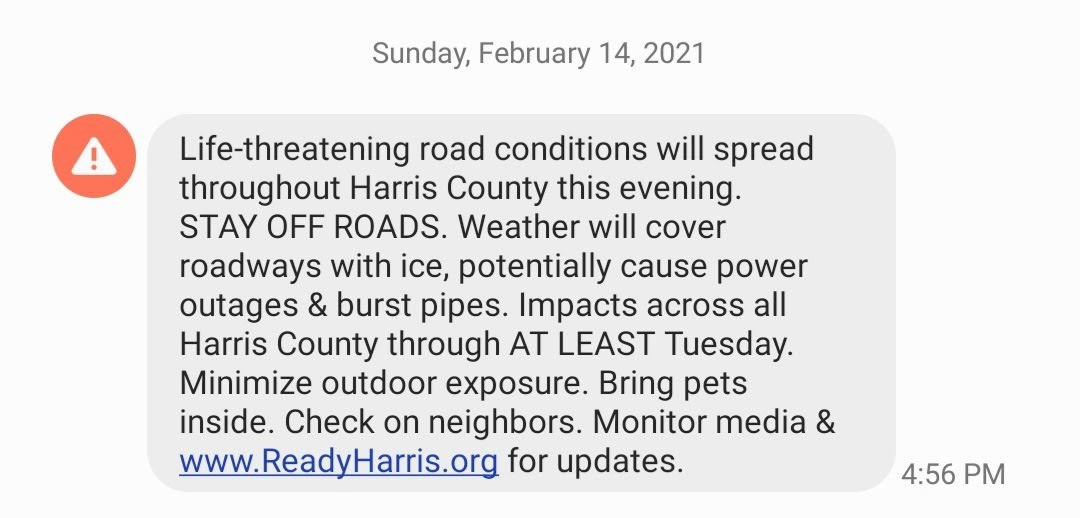
We have certainly learned how to prepare for being without water, electricity, and heat in Austin! We have a game plan now, though, in case February 2024 wants to continue the annual deep freeze!
I will never forget waking up in the middle of the night that February morning in 2021 and seeing Blizzard warnings coming in from the western counties outside of Houston. A shock even to this lifelong Texan! Growing up in DFW, we had our share of snowy days, more so in the 80s than in the 90s, but still some. I'd forgotten how cold it could get here in Texas after 8 years in Florida!